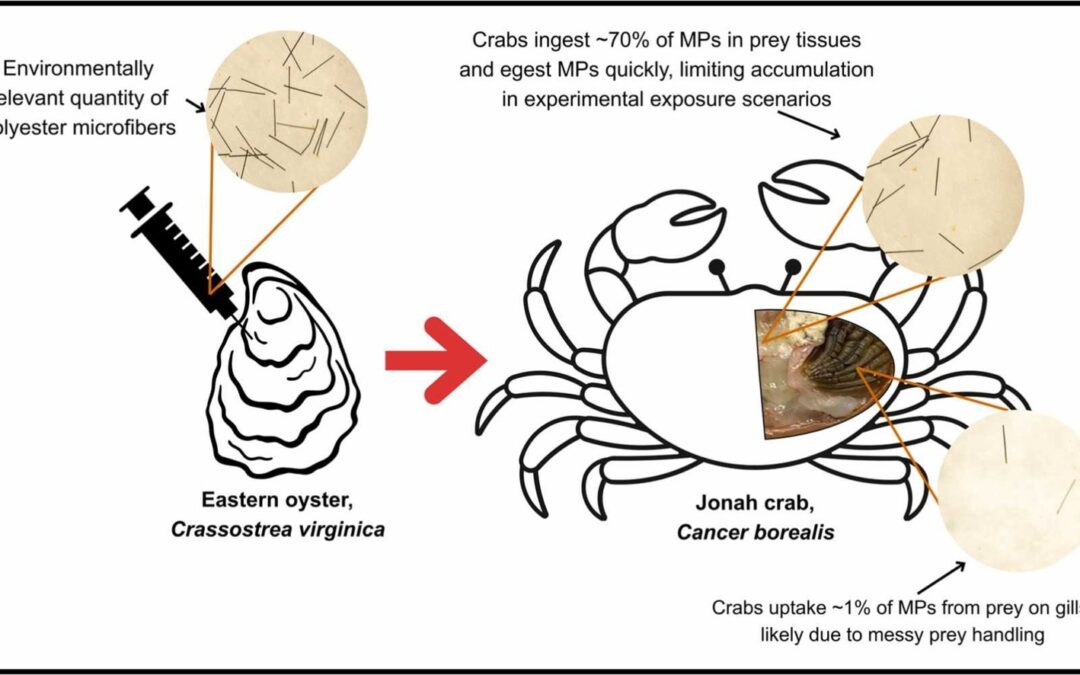Novel microplastic dosing approach of shellfish prey reveals highly efficient egestion rates by predatory crabs under environmentally realistic feeding scenarios
Davis SM, Reimels L, Davies AJ, McMahon KW, Suckling CC
The marine benthos is a sink for microplastic (MP) pollution, placing benthic organisms like filter-feeding bivalves at high exposure risk. Predatory crabs that consume bivalve prey may further accumulate MPs via trophic transfer, possibly facilitating tissue accumulation of ingested MPs. However, prior studies often lack methodology with environmental realism in dose, particle characteristics, and prey handling. We developed a novel dosing method to quantitatively inject polyester (PES) microfibers into intact Eastern oysters (Crassostrea virginica) to simulate natural predation. Oysters were dosed with environmentally realistic MP concentrations (103 ± 15 PES microfibers – 662 μm length, 16 μm width; representative of high pollution scenarios) to evaluate: (1) MP retention in Jonah crab (Cancer borealis) tissues following a single oyster feeding event, and (2) MP accumulation following repeated oyster feeding events. Crabs ingested 70 % of MPs within a single dosed oyster, and 99 % of those ingested MPs were egested within 24 hrs. Approximately 1 % of MPs were retained by gills from the ambient water during messy predation behavior. We identified limited evidence of MP bioaccumulation in crab stomachs or gills after single or multiple oyster consumption events, likely due to rapid egestion, and limited evidence of MP translocation to internal tissues (reproductive, hepatopancreas, hemolymph), suggesting size-dependent translocation thresholds. In contrast, field-collected crabs had more MPs in gills (5.2 ± 1.1) and reproductive tissues (3.8 ± 1.5) than in stomachs (2.2 ± 0.8) or hepatopancreas (0.6 ± 0.6), highlighting discrepancies between laboratory and field. These findings underscore the value of realistic exposure approaches to better understand MP trophic transfer in marine food webs.
Request PDF
| To request a PDF copy of this paper, please enter your email address below: Your email address is not stored, it is only used to send an email with an attached PDF to you. |
Full Citation
Davis SM, Reimels L, Davies AJ, McMahon KW, Suckling CC (2025) Novel microplastic dosing approach of shellfish prey reveals highly efficient egestion rates by predatory crabs under environmentally realistic feeding scenarios. Journal of Hazardous Materials 500: 140480

